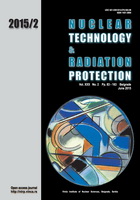
MEASUREMENT OF WATERBORNE RADON IN THE DRINKING WATER OF THE DERA ISMAIL KHAN CITY USING ACTIVE AND PASSIVE TECHNIQUES
Pages: 139-144
Authors: Tabassum Nasir, Matiullah, Muhammad Rafique, and Rubeena Tahseen
Abstract
Groundwater is considered to be the second largest contributor to the indoor radon concentration after soil. Therefore, measurement of waterborne radon has remained a point of interest for many researchers. The main objective of this study is to study waterborne radon activity in the city of Dera Ismail Khan. In this context, water samples were collected from different locations of the city and waterborne radon was measured using a pylon vacuum water degassing system and CR-39 based radon detectors. The pylon system measured waterborne radon activities in samples of hand pumps and motor driven pumps varying from 0.015 to 0.066 Bq/L and 0.021 to 0.145 Bq/L with average values of 0.041 ± 0.015 Bq/L and 0.076 ± 0.024 Bq/L, respectively. Whereas CR-39 based measured values ranged from 0.042 to 0.125 Bq/L and 0.075 to 0.158 Bq/L with average values of 0.081 ± 0.021 Bq/L and 0.120 ± 0.020 Bq/L, respectively. The estimated average annual effective dose due to ingestion of radon from drinking water using pylon and CR-39 based radon detectors for hand and motor pump samples was found to be 1.055±10-4 mSv and 1.947±10-4 mSv, and 2.067±10-4 mSv and 3.058±10-4 mSv, respectively. The waterborne radon concentrations and as a result the annual effective dose expected to be received from it are within the recommended safe limits.
Key words: drinking water, pylon system, CR-39, radon concentration, annual effective dose
FULL PAPER IN PDF FORMAT (2.39 MB)
